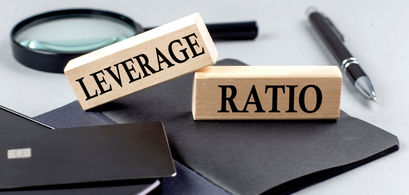Definition
The term leverage ratio is used to describe several measures of a company's financial leverage. Also known as gearing, leverage measures the amount of debt a company has issued relative to other capital such as equity.
Calculation
The three most common leverage ratios include the debt ratio, debt-to-equity, and interest coverage.
Debt Ratio = Total Liabilities / Total Assets
Debt to Equity = Total Liabilities / Owner's Equity
Interest Coverage = Operating Income / Interest Expense
Explanation
Leverage is often used interchangeably with the term debt. Creditors consist of bondholders and other financial institutions that have loaned money to a company. In exchange for the use of their money, companies pay creditors a rate of interest on the outstanding principal.
If a company cannot make payments to creditors, they have the first claim to the assets of the company. If a company does not generate enough profits to pay money owed to creditors, they can force the company to sell its assets to help repay this money as part of a bankruptcy proceeding.
Leverage ratios are used by investors, analysts and creditors to measure this risk of non-payment. When drawing conclusions about the relative performance of a company, benchmark comparisons should be made with competitors in the same industry.
Example
Company A's balance sheet indicates total liabilities of $16,196,000, stockholders equity of $15,420,000, and total assets of $31,616,000. The two leverage ratios derived from this information include:
Debt Ratio
= $16,196,000 / $31,616,000, or 0.51
Debt to Equity
= $16,196,000 / $15,420,000, or 1.05

